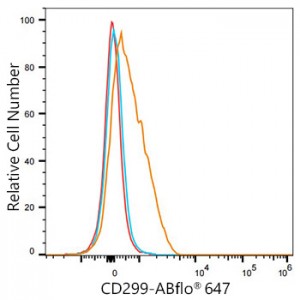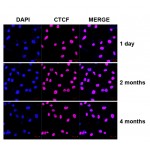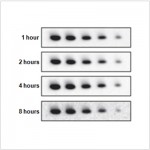ABflo® 647 Rabbit anti-Human DC-SIGNR/CD299 mAb (100 T)
| Reactivity: | Human |
| Applications: | FC |
| Host Species: | Rabbit |
| Isotype: | IgG |
| Clonality: | Monoclonal Antibody |
| Conjugation: | ABflo® 647. Ex:648nm. Em:664nm. |
| Gene Name: | C-type lectin domain family 4 member M |
| Gene Symbol: | CLEC4M |
| Synonyms: | CD299; LSIGN; CD209L; L-SIGN; DCSIGNR; HP10347; DC-SIGN2; DC-SIGNR |
| Gene ID: | 10332 |
| UniProt ID: | Q9H2X3 |
| Clone ID: | 9D0H9 |
| Immunogen: | Recombinant fusion protein containing a sequence corresponding to amino acids 71-399 of human DC-SIGNR/CD299 (NP_055072.3). |
| Dilution: | FC,5 μl per 10^6 cells in 100 μl volume |
| Purification Method: | Affinity purification |
| Concentration: | 0.04 mg/mL |
| Buffer: | PBS with 0.03% proclin300,0.2% BSA, pH7.3. |
| Storage: | Store at -20°C. Avoid freeze / thaw cycles. |
| Documents: | Manual-CLEC4M Antibody |
Background
This gene encodes a C-type lectin that functions in cell adhesion and pathogen recognition. This receptor recognizes a wide range of evolutionarily divergent pathogens with a large impact on public health, including tuberculosis mycobacteria, and viruses including Ebola, hepatitis C, HIV-1, influenza A, West Nile virus and the SARS-CoV acute respiratory syndrome coronavirus. The protein is organized into four distinct domains: a C-terminal carbohydrate recognition domain, a flexible tandem-repeat neck domain of variable length, a transmembrane region and an N-terminal cytoplasmic domain involved in internalization. This gene is closely related in terms of both sequence and function to a neighboring gene, CD209 (Gene ID: 30835), also known as DC-SIGN. The two genes differ in viral recognition and expression patterns, with this gene showing high expression in endothelial cells of the liver, lymph node and placenta. Polymorphisms in the tandem repeat neck domain are associated with resistance to SARS infection.
Images
 | Flow cytometry:1×10^6 293T cells (negative control,Left) and 293T(Transfection,right) cells were surface-stained with ABflo® 647 Rabbit anti-Human DC-SIGNR/CD299 mAb(A23174,5 μl/Test,orange line) or ABflo® 647 Rabbit IgG isotype control (A22070,5 μl/Test,blue line). Non-fluorescently stained cells were used as blank control (red line). |
 | Flow cytometry:1×10^6 293T(Transfection) cells were surface-stained with ABflo® 647 Rabbit IgG isotype control (A22070,5 μl/Test,left) or ABflo® 647 Rabbit anti-Human DC-SIGNR/CD299 mAb(A23174,5 μl/Test,right). |
 | Flow cytometry:1×10^6 Human PBMC were surface-stained with ABflo® 647 Rabbit anti-Human DC-SIGNR/CD299 mAb(A23174,5 μl/Test,orange line) or ABflo® 647 Rabbit IgG isotype control (A22070,5 μl/Test,blue line). Non-fluorescently stained cells were used as blank control (red line). |
 | Flow cytometry:1×10^6 Human PBMC were surface-stained with ABflo® 647 Rabbit IgG isotype control (A22070,5 μl/Test,left) or ABflo® 647 Rabbit anti-Human DC-SIGNR/CD299 mAb(A23174,5 μl/Test,right). |
You may also be interested in:



